Urban Observations – Los Angeles (Touring)
Friday 11 January 2013, 7:00pm
Angus-Hughes Gallery
26 Lower Clapton Rd
London E5 0PD
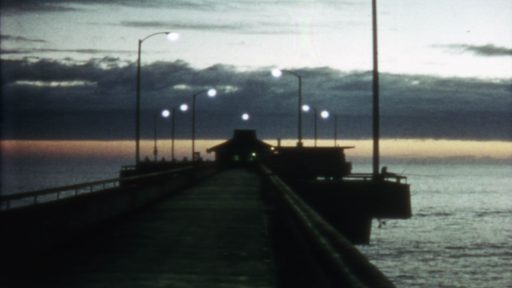
Sheffield Fringe and Angus-Hughes Gallery are pleased to present an evening of films selected by Los Angeles Filmforum’s Adam Hyman. The programme includes recently rediscovered films, rarely seen in the UK, alongside contemporary works that reframe the recent past and explore the kaleidoscopic expanse of Los Angeles’ geography.
Urban Observations – Los Angeles uncovers how alternate visions of Los Angeles were forged by multiple generations of experimental filmmakers. All these works are non-fiction, but none fit common documentary modes. How does one see the many facets of any city, and what are some of the possibilities of conveying those observations through film?
Two portraits of markets in different parts of the city have different objectives. Grand Central Market, directed by William Hale and photographed by Haskell Wexler for the US Information Agency in 1963 propagates without commentary the harmonious mingling of races in downtown Los Angeles. Shoppers Market – a recently rediscovered masterpiece made in the same year by John Vicario – whilst he was still a student at UCLA – casts a playfully critical glance at supermarket shopping. As Ken Eisenstein points out, Vicario’s sound design gives pleasure to our ears; by far the more sensitive in the cinematic experience. The diversity of different visions of the LA cityscape is further revealed via a meditation on the last drive-in movie theatre in Los Angeles in Laura Kraning’s film Vineland (2009), “serving as an emblematic space, where a collision of realities takes place”. Glimpses of the city from buses and their denizens create the backdrop to isolation, routine and everyday splendor as described by Alexandra Cuesta in her film Piensa En Mi (2009). And a latent history of the birth of the Jet Propulsion Laboratory and the occult is explored in Devil’s Gate (2011), again by Laura Kraning. Finally Venice Pier, Gary Beydler’s film from 1976, is a conceptual masterpiece and a ‘cinematic walk’ on Venice Pier, majestically documenting the course of a whole year. – Adam Hyman
Adam Hyman is a documentary filmmaker and executive Director for Los Angeles Filmforum, the longest-running showcase for independent, experimental and progressive moving-image art in Southern California. lafilmforum.org
This programme was first screened on 15 June 2012 at the Void Cinema, Sheffield Hallam University as part of Sheffield Fringe.
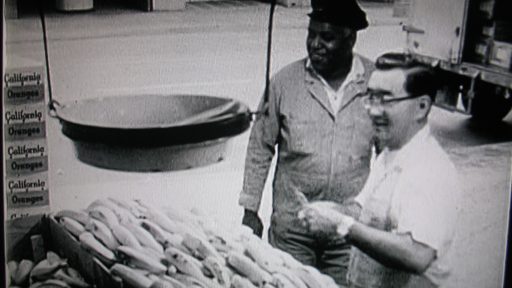
Grand Central Market | William Hale | USA 1963 | 16mm | 10 min
Directed by William Hale and photographed by Haskell Wexler for the US Information Agency about Grand Central Market in downtown Los Angeles, the film shows, ‘without comment, the mingling of races in a downtown market in Los Angeles amid the sounds of paper sacks snapping and cash registers ringing.’ – Richard Dyer MacCann “Film and Foreign Policy: The USIA, 1962-67,” Cinema Journal
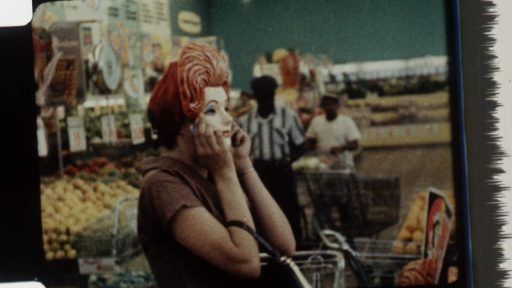
Shoppers Market | John Vicario | USA 1963 | 16mm | 22 min
“Supermarkets and their stuff appeal to our wallets through our eyes, and, presumably, to our stomachs through our mouths. The remarkable thing about John Vicario’s recently re-discovered Shoppers Market (1963) is its attention to our ears. With its snippets of customer conversation melded to the eponymous Santa Monica store’s ambience and Muzak (including some piped-in in post by the filmmaker himself—e.g. Ussachevsky, Bartók), Vicario’s film, made at UCLA, cuts a fascinating tapestry of observational footage that audibly takes us to the verge of inner anxieties around produce and product, timelessness and 24 hour commerce, walking the aisle and checking out.” – Ken Eisenstein
UK Premiere. Restored print courtesy of the Academy Film Archive
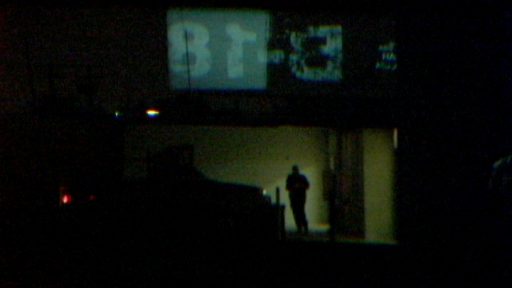
Vineland | Laura Kraning | USA 2009 | Digital video | 10 min
At the last drive-in movie theater in Los Angeles, dislocated Hollywood images filled with apocalyptic angst float within the desolate nocturnal landscape of the City of Industry. In this border zone, re-framed and mirrored projections collide with the displaced radio broadcast soundtrack, revealing overlapping realities at the intersection of nostalgia and alienation. “… Vineland speaks quietly and eloquently of fantasized image-making, of the sheer presence and scale of Hollywood’s imposition on the landscape…” – Tony Pipolo, Millenium Film Journal
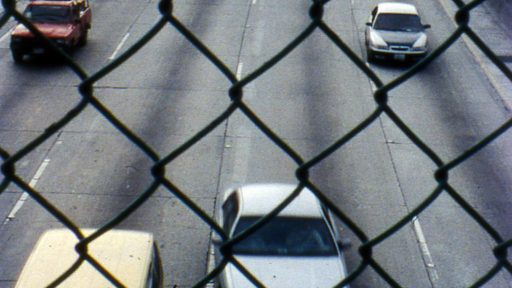
Piensa En Mi | Alexandra Cuesta | USA 2009 | 16mm | 15 min
Moving from east to west and back, the windows of a bus frame fleeting sections of urban landscape. Throughout the day, images of riders, textures of light and fragments of bodies in space come together to weave a portrait in motion; a contemplative meditation on public transport in the city of Los Angeles. Isolation, routine and everyday splendor, create the backdrop of this journey, while the intermittent sounds of cars construct the soundscape. UK Premiere
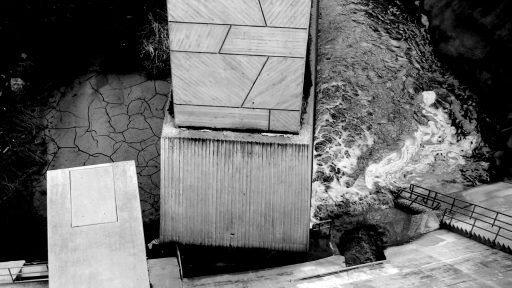
Devil’s Gate | Laura Kraning | USA 2011 | HD | 20 min
Devil’s Gate depicts the physical and mythological terrain of Devil’s Gate Dam, located at the nexus of Pasadena’s historical relationship with technology and the occult. Intertwined with its central figure, Jack Parsons, who some believe to have opened a dark portal in this place, the film merges an observational portrait of a landscape transformed by fire, ash and water with a fragmentary textual narrative, providing a view into man’s obsession with controlling and transcending the forces of nature and spirit. UK Premiere

Venice Pier | Gary Beydler | 1976 | 16mm | 16 min
“Gary Beydler’s last, and possibly least-seen, film is an exhilarating tour down the length of the Venice Pier, shot over the course of an entire year. It’s a particularly cinematic walk in many ways. Gary investigates the way a single film stock responds so diversely to different seasons, light, weather, time of day. He also beautifully exploits the power of editing to compose or recompose events. Shot spatially out of order over the course of a year, Gary recomposed the footage in editing to make it proceed consistently forward in space, resulting in an intricate mixing up of chronology, so some cuts could represent a jump of months either forward or backward in time. The result is one of gauzy impressionism brought into vivid and breathtaking clarity.” – Mark Toscano